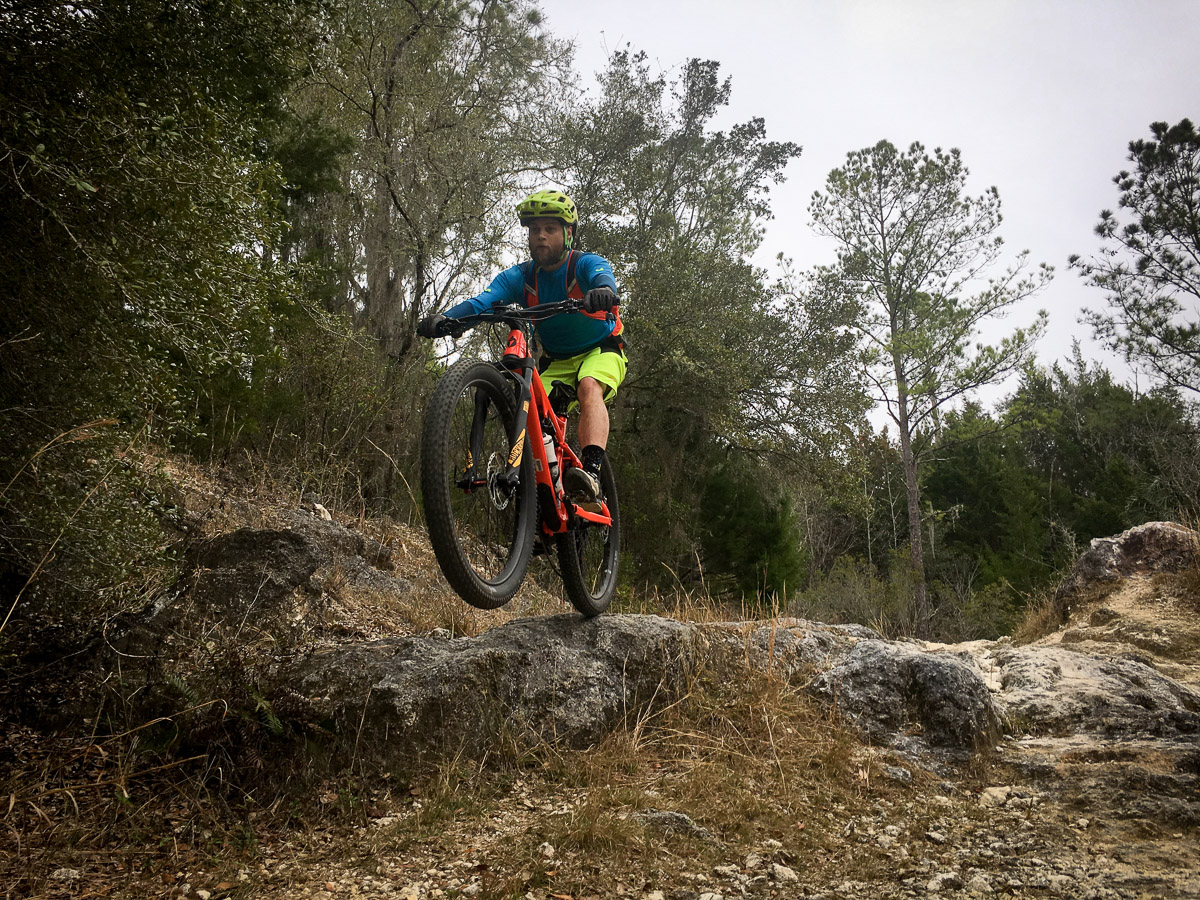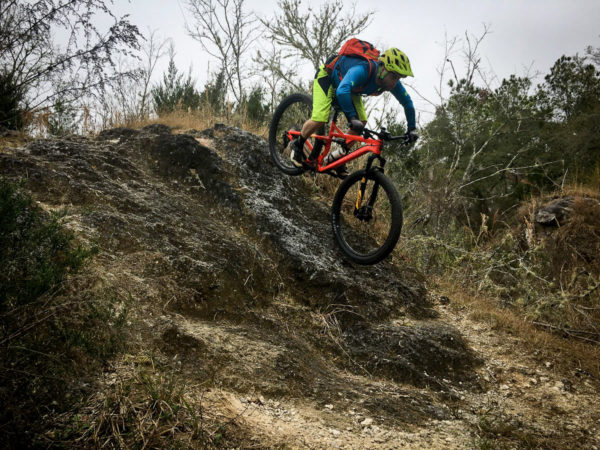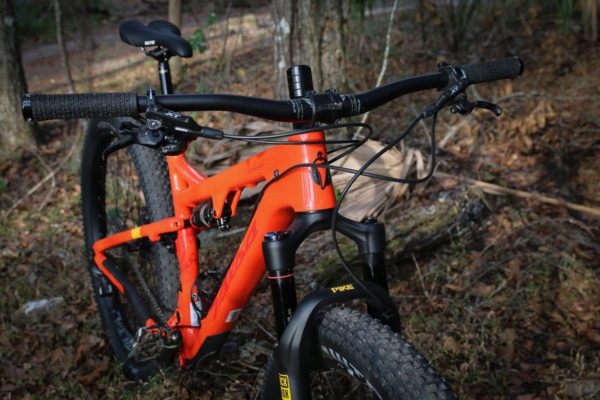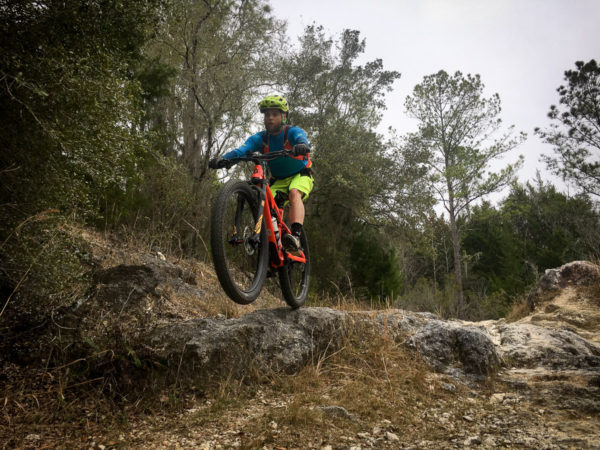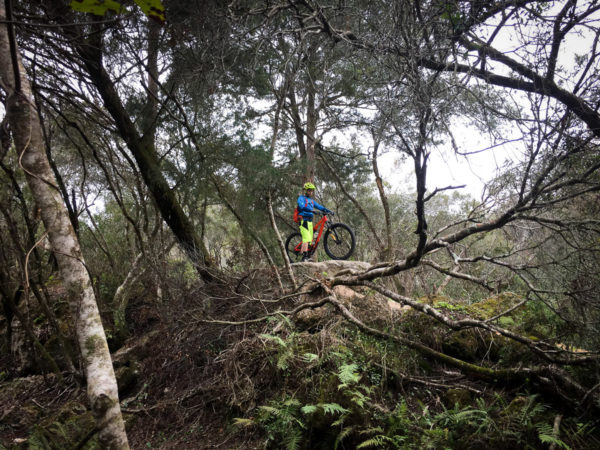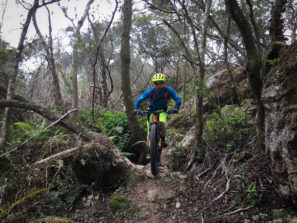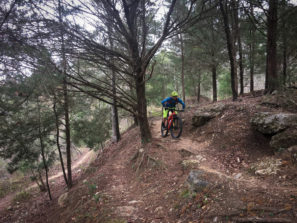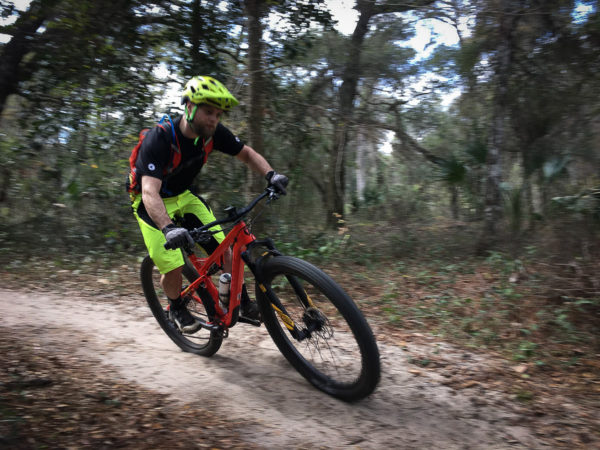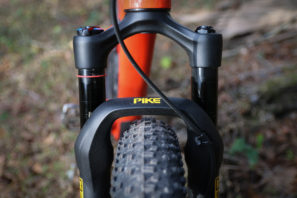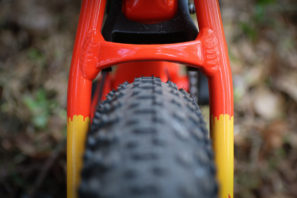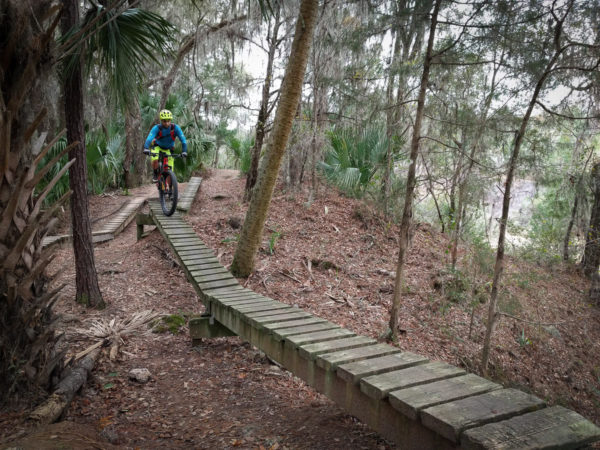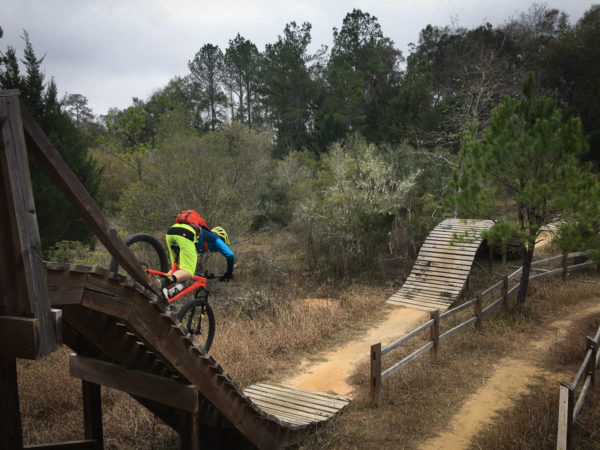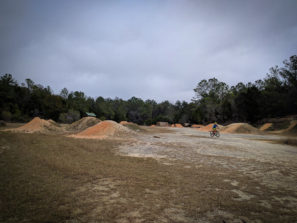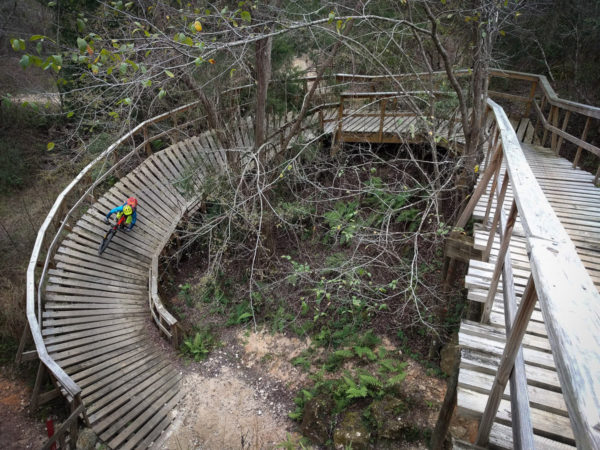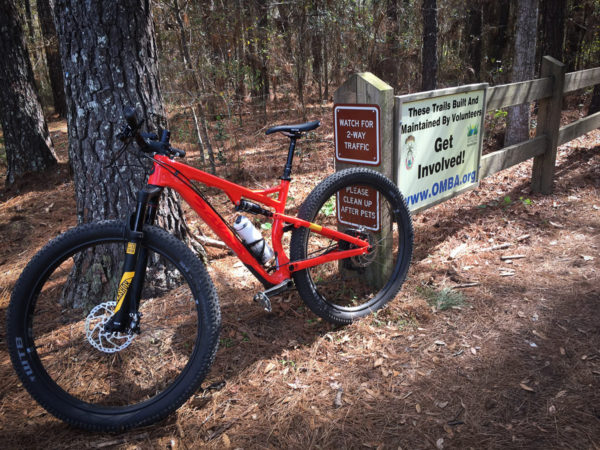If you haven’t heard the news, Salsa has a new bike. Specifically, the Deadwood SUS is their take on a full suspension frame built around 29+ wheels and tires. Salsa isn’t the first company to shoehorn the tires into a suspension frame, but their move into the space is a big indication of what’s to come. Along with their fellow Q-brand Surly, Salsa has routinely been ahead of the wave when it comes to new tire sizes, whether that means plus, gravel, or fat.
To launch their newest masterpiece, Salsa invited us out to Stokesville, Virginia to give it a rip. Unfortunately, we couldn’t make the trip, but when Salsa offered to send a bike, the wheels started turning. Looking for the opportunity to get in some fat bike testing as well, we set off in search of the sun, warm weather, and dry trails. That led us down to Ocala, FL to check out the Santos trail system. It’s been years since I’ve been to Santos – the last time was on a 26″ mountain bike, and I think 29ers had just become a thing (27.5″ was not even a concept at that point). At that time, I remember thinking to myself that the constant roots, jagged rock, and sandy corners made for a ride that offered little reward for a lot of work. This time though, it was different.
It’s amazing how much of a difference a little time, and a lot of tire volume can make…
It isn’t often that I’m presented with the opportunity to review a bike and I’m a bit hesitant. I wasn’t worried the Deadwood SUS would deliver, it was more the concern that the 29+ tires on a full suspension frame might be too much for someone my size (5’8″, 30″ inseam). I’ve come away from other 29+ hardtails thinking that I could appreciate the ride, but that it wasn’t for me.
Now, after actually riding the Deadwood SUS, I’m so glad I didn’t turn it down.
For starters, even at my height, I found the medium frame to fit admirably well considering. One of my biggest concerns on 29ers, let along 29+, is the handlebar height. Since the front suspension is limited to 100mm out of the RockShox Pike, I was able to get the bar close to where I’d like it with the stem fully slammed and in the negative position. It’s still a little high for my taste, but you could get rid of the riser bar and drop it another 15mm. Taller riders may want to add a longer travel dropper post, but I was stoked to see a 100mm Reverb Stealth on the medium which allowed me to use full travel and still have room to spare on the post.
Most importantly, it wasn’t the components that were chosen, it was the geometry of the bike. Salsa has done a tremendous job of making the 29+ wheels and tires feel so nimble, that you forget that this isn’t a “normal” 29er. Manuals take a little more effort, but it’s still very easy to get the front wheel aloft for technical drops. Of course, the added tire volume and suspension are able to erase a lot of mistakes if your maneuver doesn’t go as planned. Don’t let the travel numbers fool you, the Deadwood SUS is a true trail bike that feels completely comfortable in the air or on the ground.
I wasn’t quite sure going into it, but Santos turned out to be an incredible place to test out a 29+ full suspension rig. Between the loose sand in sweeping corners, gnarled masses of exposed roots, and frequent rock outcroppings, the added float and traction for days was hugely appreciated. Starting out the day at 14/15 psi front/rear, I ended up airing down trail side to about 12/13 psi which seemed to be the sweet spot. The addition of the WTB Ranger Tough/Fast casing tire in the rear was key to my confidence of running lower pressures, especially with how rocky it was and how many times I landed to flat off jumps and North Shore features. If I were to own this bike for myself, it would be a needed upgrade, though the Light/Fast casing on the front did the trick. Even after bottoming out the fork and the front tire a few times on some of the gnarlier bits, the tires remained puncture free.
I will say that while the traction from the 29+ tires is impressive, the Rangers could use more aggressive cornering lugs if you really want to push it in corners. Or, WTB should just offer something like the Riddler in a 29+ version, at least for the front. While the tires tended to push in loose corners, elsewhere the traction was incredible whether on moss or sand covered rock, or pine needle covered single track. To be fair, Santos has a lot of wide open, flat, sandy corners that most tires will struggle with, and the Deadwood SUS still maintained a good clip.
Which brings me to another revelation – the added momentum of the 29+ wheels and tires. Yes, there is a lot of mass to get moving from a dead stop, but once you get these things rolling, watch out. I was amazed at how much speed the bike was able to carry through technical sections, making tricky moves much easier than they should be. In this regard, I almost feel like full suspension plus is better suited to 29+ than 27.5+. The biggest draw back to any plus full suspension rig is the added energy it takes to get the big tires up to speed. If you ride a lot of technical trails where your speed often drops to almost nothing and then you have to quickly crank up a steep incline, that can really add up in the long run. After a four hour ride at Santos including every bit of technical trail and features we could find, I was tired, but not nearly as tired as I expected to be after pushing a 31lb bike around the place.
You might think that a state as flat as Florida wouldn’t have much in the way of climbs, but there were a number of steep, punchy sections that will put your climbing abilities to the test. More than anything, it seemed to highlight how much the added traction of the tires help in these situations with the ability to claw your way up at stupid slow speeds.
While Santos turned out to be a great place to test out the Deadwood SUS’s abilities in natural terrain, it also provided a chance to see how it would react to something a little more… unnatural. If you haven’t been in awhile, if you venture into the Vortex section at Santos you may not recognize the place. That’s largely due to bike park legend Ray Petro lending his expertise to the creation of new features. Yes, that’s the same Ray from Ray’s MTB Park, and his signature is unmistakable as you fly over the Roller Coaster or down through the Corkscrew.
Whether it was on a jump line, or over one of the many skinnies, the Deadwood SUS never felt out of its element. That is something I did not expect from this bike going in. I sort of expected it to be the plus MTB equivalent of a Cadillac – plush and comfortable, but slow on its feet. I could not have been more wrong.
If anything, the Deadwood SUS was built to shatter preconceptions which it seems to do in spades. I went into this review with the anticipation that the bike would probably be good, but it wouldn’t be for me. Now I’m left wondering what else I’m wrong about – and where I can continue to ride this thing while our local trails are drying out from an all-too-wet winter. If my first impressions are any indication of the long term ride, the Salsa Deadwood SUS is a complete surprise. This is one book bike that can’t be judged by its cover tires.
